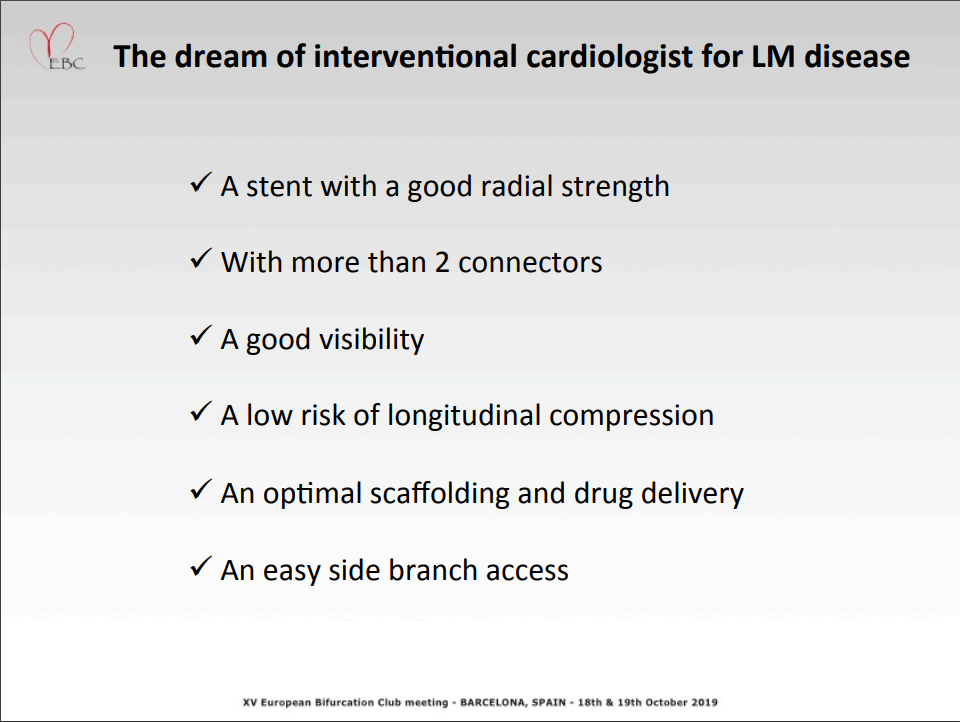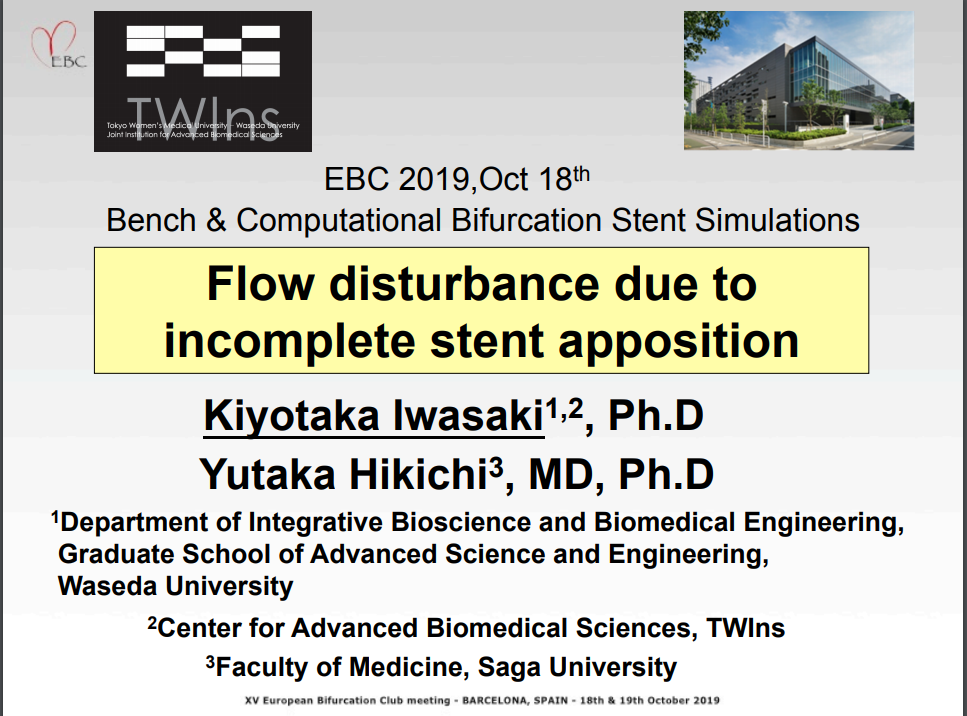European Bifurcation Club 2019, EBC 2019 - Barcelona, Spain
AWARD CASE SESSION - VOTING
A left main distal trifurcation lesion: what did I do
Author: Shih Hung Chan, MD, PhD, National Cheng Kung University Hospital, Taiwan
PATIENT CHARACTERISTICS
A 49-year-old male had hypertension and hyperlipidemia. He had already received percutaneous coronary intervention twice for non-ST elevation myocardial infarction and unstable angina pectoris in the past few years. This Ame, he presented with crescendo angina for 1 month. Renal function was normal.
TREATMENT STRATEGIES
LV assistance device: nil
Debulking/plaque modification:
No marked calcification: not needed in the beginning
In case needed, considering cutting balloon, scoring balloon,or rotational atherectomy
Intravascular image:
Definitely needed
IVUS
Antithrombotic: aspirin, clopidogel, and heparin
Stenting strategy
TAKE HOME MESSAGES
Percutaneous coronary intervention (PCI) for left main trifurcation lesion is challenging. No one-size-fits-all strategy is available
The choice of treatment strategy is depended on the discrepancy between vessel size, extent of calcification, angle between vessels, etc.
To be familial with various PCI techniques, including provisional one stent and two-stent technique as well as the way to protection side branch, is the key to successful PCI for leI main trifurcation lesion









